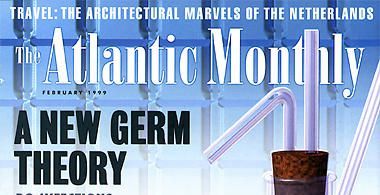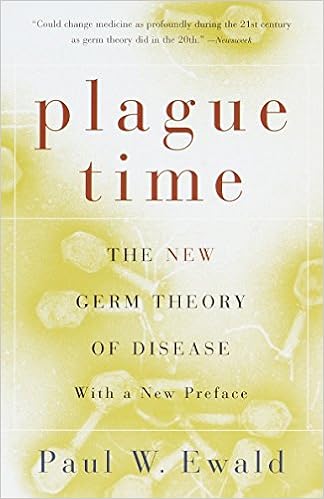
By Steve Sailer
08/17/2003

VDARE.COM is not a full-service webzine and we don’t take a position on gay marriage, gay bishops or gay (or glum) anything. (We do miss Pim Fortuyn, though.) But we are interested in the science of human differences. And it’s worth looking seriously at one of the greatest mysteries in that science: What causes male homosexuality?
(I’m focusing solely on male homosexuality because lesbianism differs in many significant ways. See my 1994 article "Why Lesbians Aren’t Gay" for a list of three dozen traits on which gays and lesbians tend to differ.)
Homosexuals are somewhere between one percent and six percent of the male population in the U.S. — the demographic data isn’t very reliable. Their existence is an embarrassing anomaly for Darwinism. From the standpoint of Darwinian fitness — i.e., the propagation of descendents — male homosexuality represents a huge loss in reproductive capacity. Genetic mathematics suggests it should go extinct.
At various times and places — for example, ancient Greece, some New Guinea tribes, elite English public schools, and the more violent American prisons — widespread homosexual behavior has been an accepted part of the culture. In almost all these cases, older and/or more masculine males use younger and/or less masculine males as female substitutes. They turn to women almost as soon as they become available.
But that’s not at all what’s happening on Castro St. and Christopher St. Instead, we see males with lifelong homosexual orientations and, typically, with as strong an urge to give pleasure to as take it from another man — especially if he is highly masculine.
For at least a decade, many male homosexuals (but, interestingly, few lesbians) have been arguing that their sexual orientation has biological roots. However, they've been reluctant for both political and personal reasons to mention the best evidence: most of them were effeminate little boys.
My friend J. Michael Bailey, the chairman of the psychology department at Northwestern University, is probably the leading researcher into sexual orientation in America. He notes that many gay men are loath to admit they were effeminate boys partly because, as can be seen in the many "Men Seeking Men" personal ads that specify "no sissies," gays find effeminate men much less sexually attractive than masculine men.

Still, the evidence is clear. In his highly-readable new book The Man Who Would Be Queen, Professor Bailey summarizes 30 studies that asked gay and straight men to rate their agreement with statements like "As a child I often felt that I had more in common with girls than boys." He found that the average adult gay man was a more feminine boy than 90 percent of straight men.
Likewise, Richard Green of UCLA followed into adulthood a group of effeminate boys and a control group of masculine boys. He found massive differences in the likelihood they would become homosexuals.
This suggests that male homosexuality is not just a sexual preference, or even a sexual orientation, but part of a larger personality structure in place long before puberty.
Accordingly, some scientists have searched for the "gay gene." Dean Hamer, a gay geneticist at the National Institutes of Health, received rapturous publicity a decade ago when he claimed to have found it.
I was skeptical for two reasons. I studied carefully the data reported in Hamer’s book The Science of Desire — which does have many good things in it. I noted that his crucial key sample group vs. control group difference was indeed statistically significant at the minimum required five percent level. That meant it would happen by chance no more than five percent of the time. But it wasn’t significant at the 4.5 percent level. That meant it could still be a fluke.
Further, Hamer was never able to answer adequately the big question: How could a gene for hereditary homosexuality avoid going extinct — much less spread to millions of people?
The improbability of a gay gene surviving natural selection may seem like a strange concept when we constantly read about geneticists discovering "the gene for" various deadly diseases. Yet, as Matt Ridley put it in his book Genome: "GENES ARE NOT THERE TO CAUSE DISEASES." Genes are there to give you capabilities to survive and reproduce.
Diseases that are unambiguously hereditary, such as Huntington’s chorea, tend to be low in incidence and/or to impact older people, who are well past their reproductive primes.

When the popular press trumpets the "gene for" a major disease, they often mean a gene related to the defense mechanisms against the disease. One version of the gene offers more protection against the disease and another version less protection, although it may offer more resistance to some other disease. Your genome is full of tradeoffs.
To take an old example, found by Linus Pauling in the 1940s: Sickle cell anemia results when a child inherits two copies of the sickle cell gene that, when only one is inherited, helps prevent another disease — falciparum malaria, which kills a million people a year in Africa. This is a "self-destructive defense" that would likely have been replaced by a less dangerous defensive mutation if the threat of falciparum malaria had been around longer. But this tropical disease’s reign as one of the deadliest of all killers is probably more recent than the last ice age, which ended only 12,000 years ago.
So, if you don’t have the right version of this "sickle cell gene," you are more likely to die of falciparum malaria. But that doesn’t mean having the wrong version directly causes malaria. It’s still more sensible to say that malaria is caused by the bite of infected mosquitoes.
(Sickle cell anemia, by the way, is an undeniably race-related disease, even though the "Race Does Not Exist " crowd tries to pretend otherwise. Thus Sharon Begley recently wrote in the Wall Street Journal: "Sickle-cell anemia, for instance, is more common in parts of sub-Sahara Africa than it is globally, but focusing prevention efforts on blacks would miss millions of southern Italians, eastern Mediterraneans, Middle Easterners and southern Indians who also carry the defective gene." Sure, carriers of a single copy of the sickle cell are sometimes found among Caucasians around the Mediterranean, but carrying one copy of the gene doesn’t give you sickle cell anemia. It takes two. And the chance of inheriting two copies falls off sharply — to be technical, by the square root — as the incidence in your local racial group falls off. Fortunately, among African-Americans sickle cell anemia appears to be in decline among African-Americans — because they no longer need the malaria protection that the "sickle cell gene" gives.)
Trying to come up with a Darwinian justification for the spread of a gay gene, Dean Hamer adapted a hypothesis put forward thirty years ago by the brilliant manic-depressive sociobiologist Robert Trivers and popularized by his deeply sane colleague Edward O. Wilson. He suggested that the gay gene might lend "inclusive fitness." Gay uncles might have so many more nephews and nieces than straight uncles that the effect of the gay gene would be positive across the whole extended family.
But simple genetic arithmetic shows this is exceedingly improbable. Male homosexuality causes a very large loss in "Darwinian fitness" — the reduction in number of descendents. Currently, male homosexuals have about 80 percent fewer children than male heterosexuals. To be cautious, let’s say that on average in the past they had only 50 percent fewer children. For "inclusive fitness" to work, that would mean that, in a stable population where the average person has two surviving children, the typical gay man would need to have at least twice as many nephews/nieces as the typical straight.
I’m sorry, but somebody would have noticed if this was true. Gays tend to have good pattern recognition skills, but they've never noticed such a pattern. Northwestern’s Bailey looked for evidence among his sample of gays. He couldn’t find any.
A follow-up study in Canada looking for Hamer’s gay gene was unable to reproduce his findings. Subsequently, the whole quest for a gay gene has faded.
There are a number of other theories, for example:
This is thought-provoking. But I think that portfolio diversity may provide a better explanation of lesbianism than of gayness. First, it’s likely that traditional societies were effective at persuading more masculine women to have almost as many babies as more feminine women. For instance, Eleanor Roosevelt had six children. So "overshoot" among women would be less of a Darwinian problem. Second, because the theory holds that traits are distributed in a bell curve, there should be more people at the bisexual half-way house than at the exclusively-homosexual extreme. And this does appear to be true among women — but not among men, according to Bailey and other researchers.

The cover story of the February, 1999 Atlantic Monthly profiled Cochran and his research partner Paul Ewald, a prominent Amherst evolutionary biologist and author of Plague Time: The New Germ Theory of Disease. They argued that, for two centuries, the fraction of diseases that we know to be caused by germs has constantly increased. For example, peptic ulcers were shown in 1983 to be caused by germs — and easily cured by antibiotics. Cochran and Ewald predicted that future research will discover germs play a major role in many big, bad diseases — such as cancer, heart disease, and schizophrenia.
The New Germ Theory actually originated in 1992 when Cochran got to wondering about the causes of male homosexuality. "The only thing we've seen worse in magnitude of genetic load [i.e. homosexuality’s negative effect on Darwinian fitness] was sickle cell anemia," Cochran told me on Friday.
Male homosexuality could be a similar "self-destructive" genetic defense against a major infectious disease, just as the "sickle cell gene" defends against malaria at the price of increasing susceptibility to sickle cell anemia. But nobody knows what that illness could be. It would have to be major — and, presumably, relatively modern, like falciparum malaria, which is puzzling.
Or, as Cochran suggests, an infectious disease itself could cause homosexuality. It’s probably not a venereal germ, but maybe an intestinal or respiratory germ. If it spreads like the flu, and if it needs to strike at a particular stage of development before or shortly after birth, then more male homosexuals might be born in one season than another, just as more schizophrenics are born in late winter and in early spring, especially in cities with cold winters. This should be easily testable.
It’s radically unfashionable to call homosexuality a disease. But you can’t think rigorously about the gay gene theory without drawing straightforward analogies to genetic diseases. Both reduce the number of descendents, which is the number that counts in evolution.
Many have reacted with horror to Cochran’s theory because it implies that homosexuality might be preventable with the right antibiotic or vaccine. Parents might decide that, since they are putting themselves through all the trouble of raising a child, they ought to increase the likelihood of grandchildren.
Whether that decision would be good or bad is a very personal matter — exactly the sort of dispute that VDARE.COM heroically avoids.
But — as with race — this fear of what the public might possibly decide in the future must not be allowed to retard research now.
The truth, it is reliably reported, will set us free.
[Steve Sailer is founder of the Human Biodiversity Institute and movie critic for The American Conservative. His website www.iSteve.blogspot.com features his daily blog.]
This is a content archive of VDARE.com, which Letitia James forced off of the Internet using lawfare.